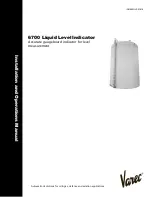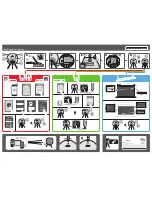
19
In the event that the patient is being transported to another medical center, the transport process involves three teams: the
transferring (spoke) center team; air or ground transport team; and the receiving (hub) center team. Key priorities include pre-
transport coordination, maintaining hemodynamic support, and continuous monitoring of the patient’s hemodynamics and CentriMag
system flow.
Transport Protocols
Existing institutional protocols for IABP, cardiopulmonary support, or ventilator- dependent patient transport may serve as useful
templates for institutional CentriMag system transport protocols. Transport protocols should include:
Equipment and supplies needed
Individuals and responsibilities
Primary and backup power sources
Securing of equipment during transport
Response to most likely complications
Transporting a patient on CentriMag system support requires a team approach for the best results. Some guidelines to follow include:
Identify and communicate with the receiving or hub hospital in advance.
Assign one individual to monitor the circuit, consoles and pumps who will be prepared to make system adjustments as needed
during transport.
CAUTION: There is increased risk of air entrainment when the patient is being moved, particularly when the patient’s chest
has not been fully closed.
Pre-position equipment and supplies. Load all backup equipment and supplies into the transport vehicle before loading the
patient.
Ensure that the pumps and motors are not covered, and that an additional console, motor and tubing clamps are always with the
patient.
The equipment should be secured to the gurney, stretcher or transport vehicle with appropriate straps or fixtures to prevent
movement during transport, for both intra- and inter-hospital transport.
The console has 2 hours of battery power. Ensure that there is another console fully charged with a motor attached in
immediate vicinity of the patient during transport.
Prior to shutting off the power supply and removal of the patient from the transport vehicle, briefly unplug the console’s power
cord to confirm adequate battery charge and console operation.
For details on the equipment as well as FAA and other standards for transport, refer to the CentriMag Circulatory Support System
Operation Manual.
Prevention and Management of Potential Complications
Potential complications are similar to those seen with other ventricular assist devices. Flow disruption is the most common
complication and can result from hypovolemia, obstruction or malposition of the cannulas, right ventricular failure, cardiac
tamponade, and/or arrhythmia. In these cases, increasing the RPM may result in an exacerbation of the complication, or accelerated
decrease in VAD flow. This should alert the operator to immediately reduce the RPM, diagnose, and address the underlying condition
causing the complication. Patients should be carefully and frequently assessed for complications listed in the table below.
Table 5. Prevention and management of potential complications
Complication
Prevention and management
Low flow or inflow obstruction
Decrease RPM. Monitor pressures and flow. Rule out and
correct hypovolemia, tamponade, and/or obstruction or
malposition of cannula.
Right ventricular dysfunction
Rule out and, if possible, adjust VAD flows, vasodilators,
and/or inotropes to correct an intra- ventricular septal shift
toward the left ventricle.
Consider pulmonary vasodilators or mechanical right ventricular
RVAD support.
Increased pulmonary vascular resistance
Minimize fluids and transfusions as feasible. Hyperventilate.
Consider pulmonary vasodilators.
Patent foramen ovale with shunting
Repair defect if feasible. If not feasible, reduce or eliminate
shunting by adjusting VAD flow and pharmacological support to
maintain RAP > LAP.
Bleeding at cannulation and other sites
Use meticulous technique during surgery and cannulation.
Secure the cannulas with dual purse-string pledgeted
sutures.
Minimize postoperative patient movement.
Monitor anticoagulation and hemostasis status.















































